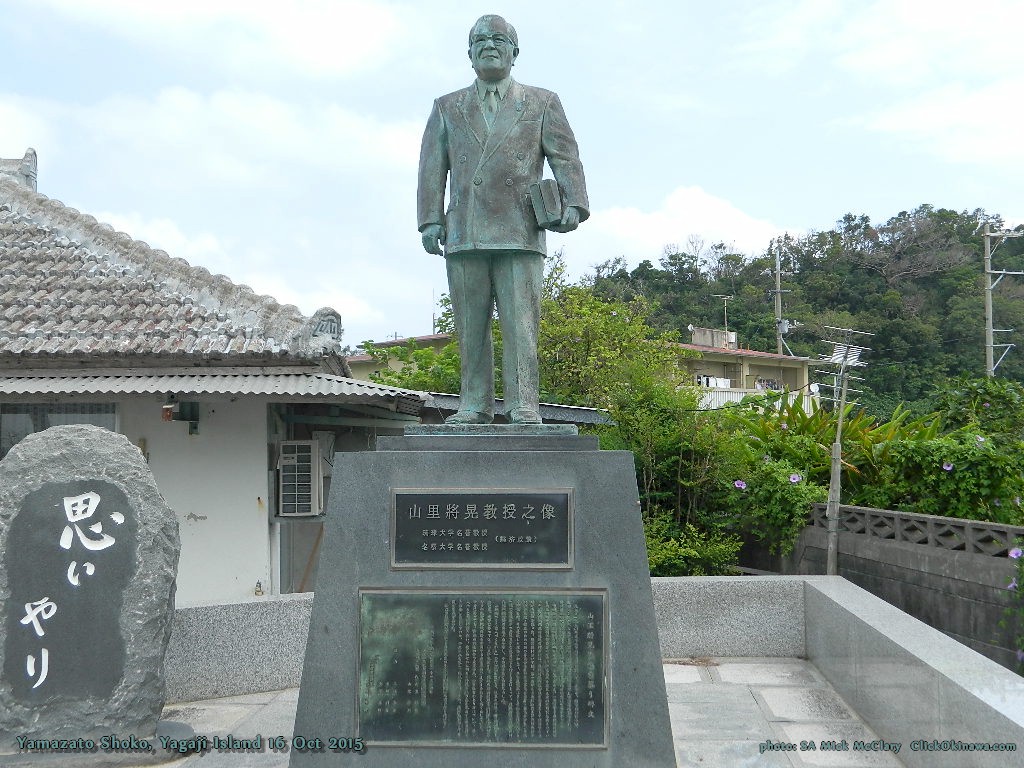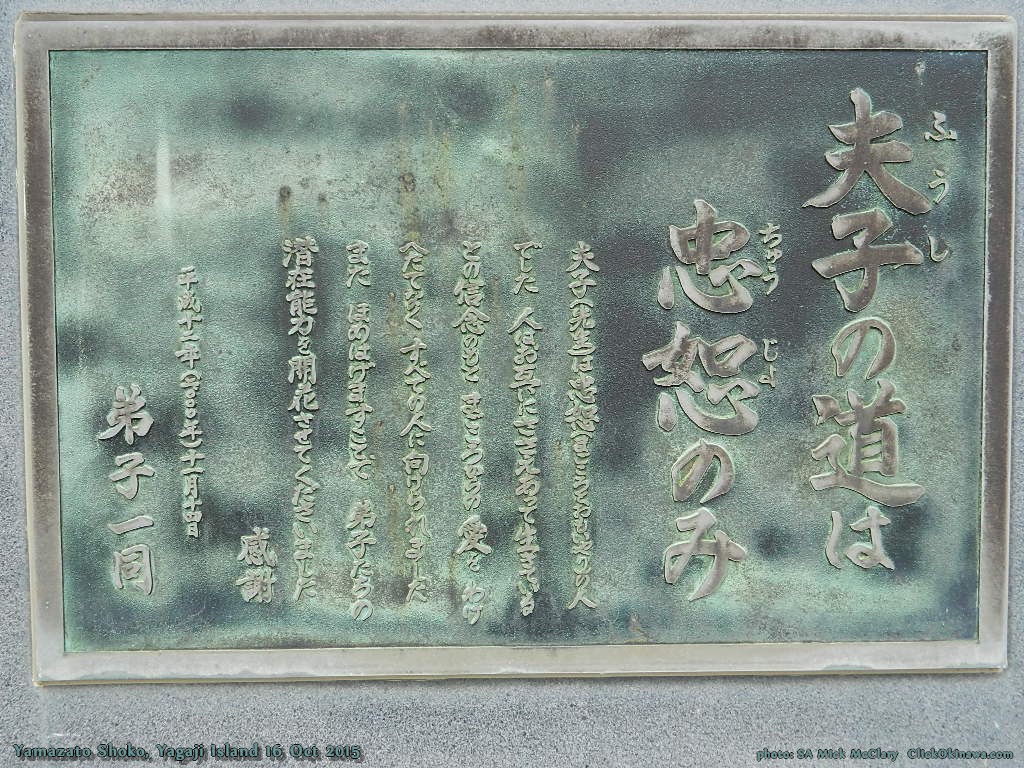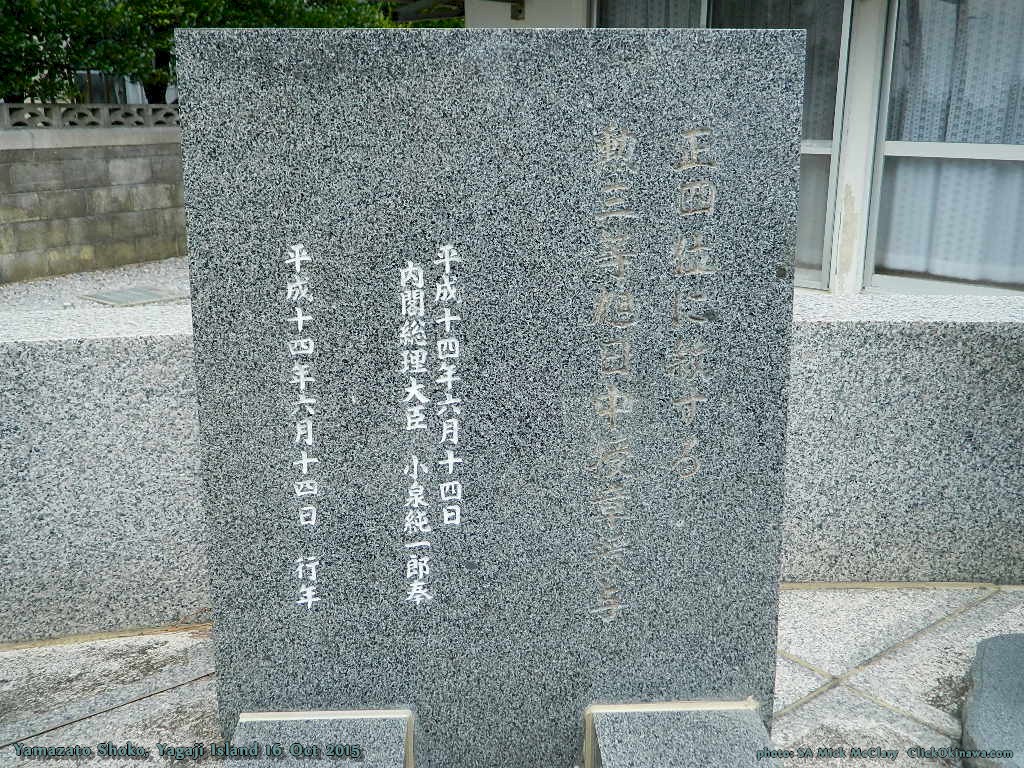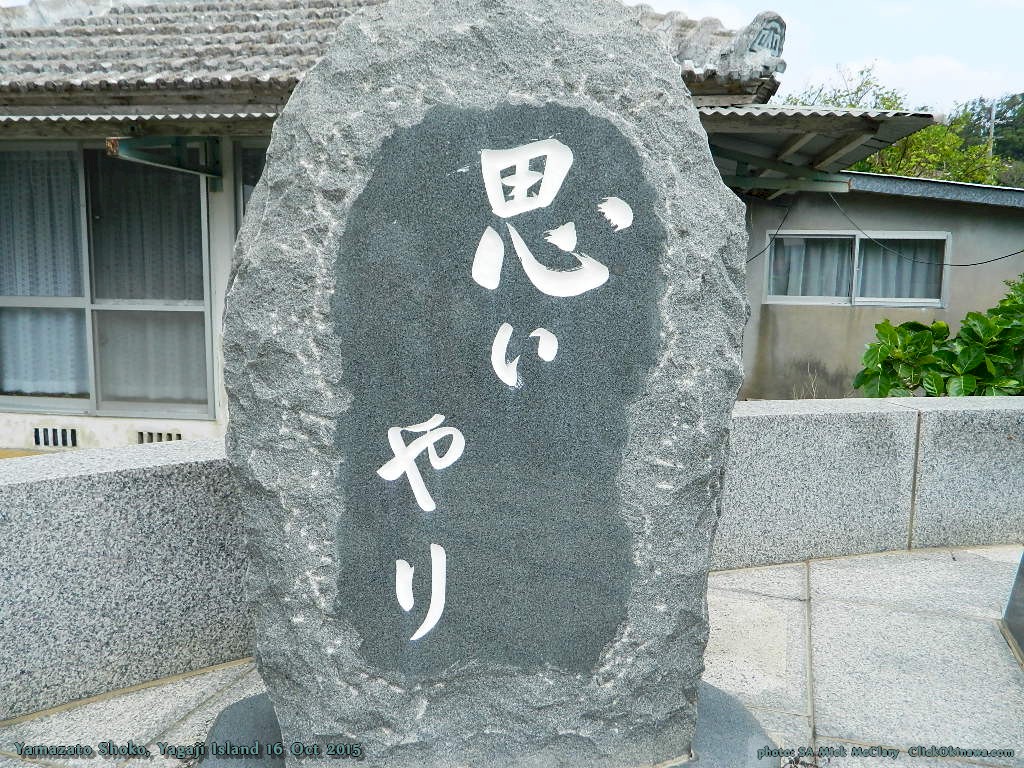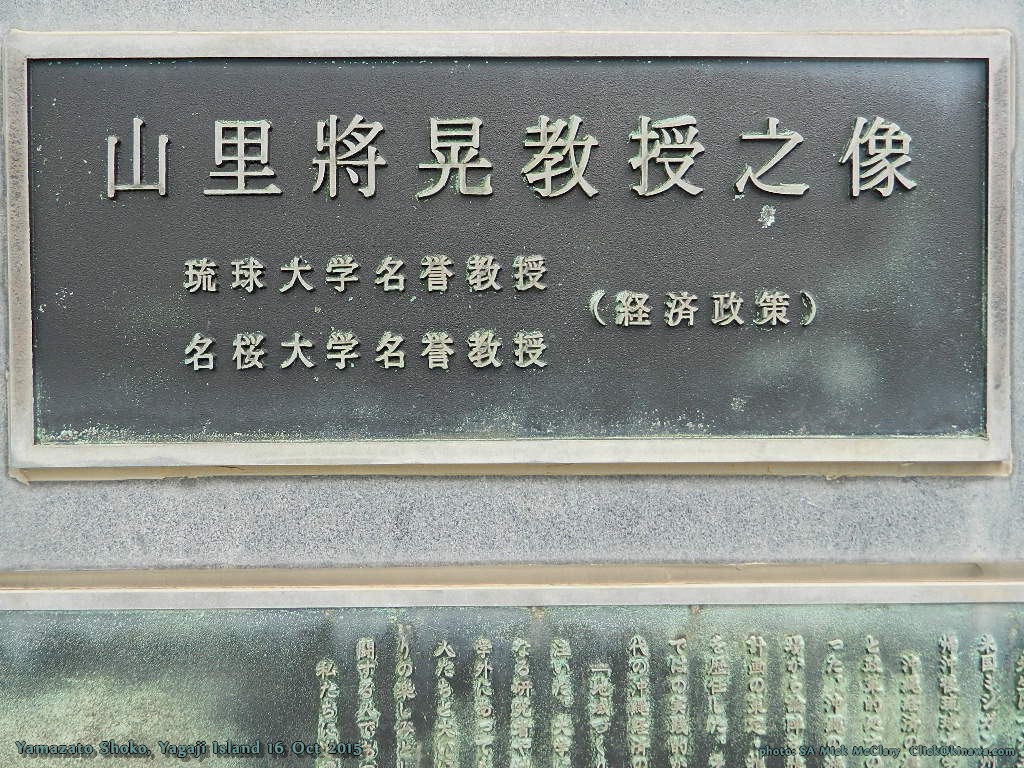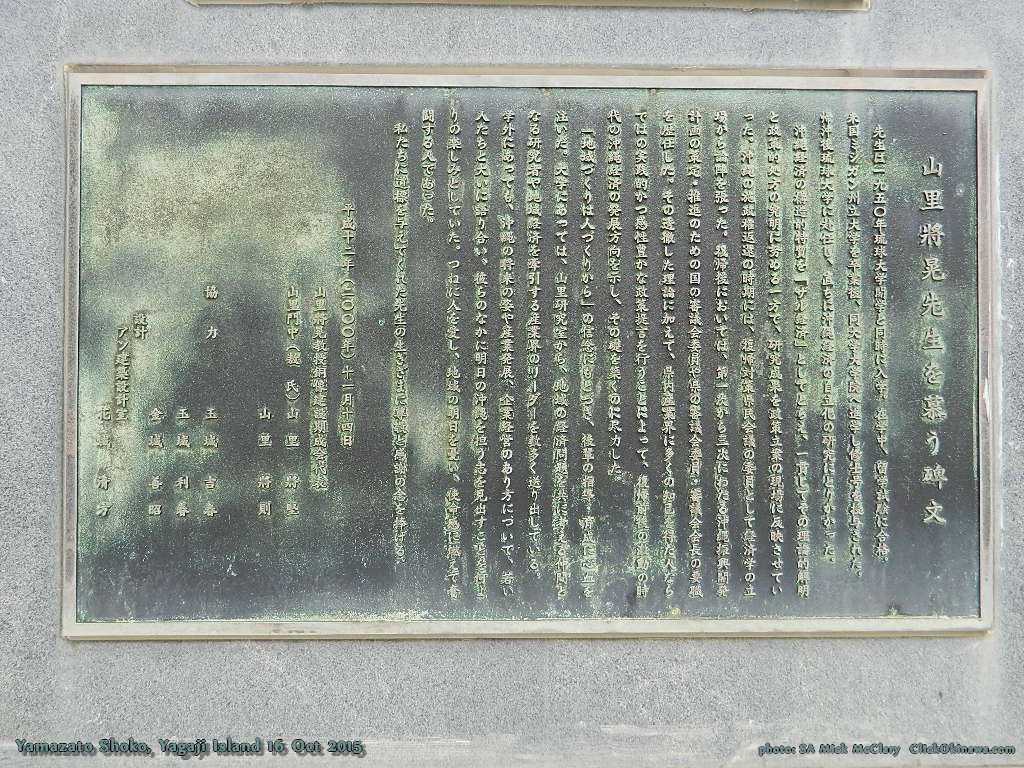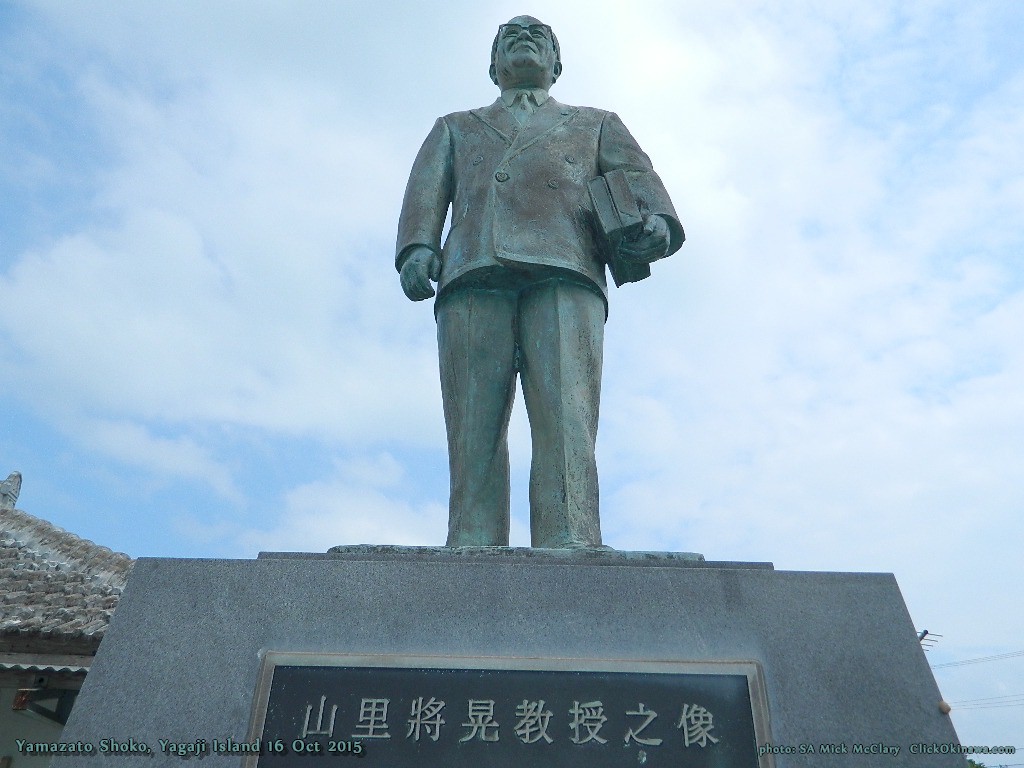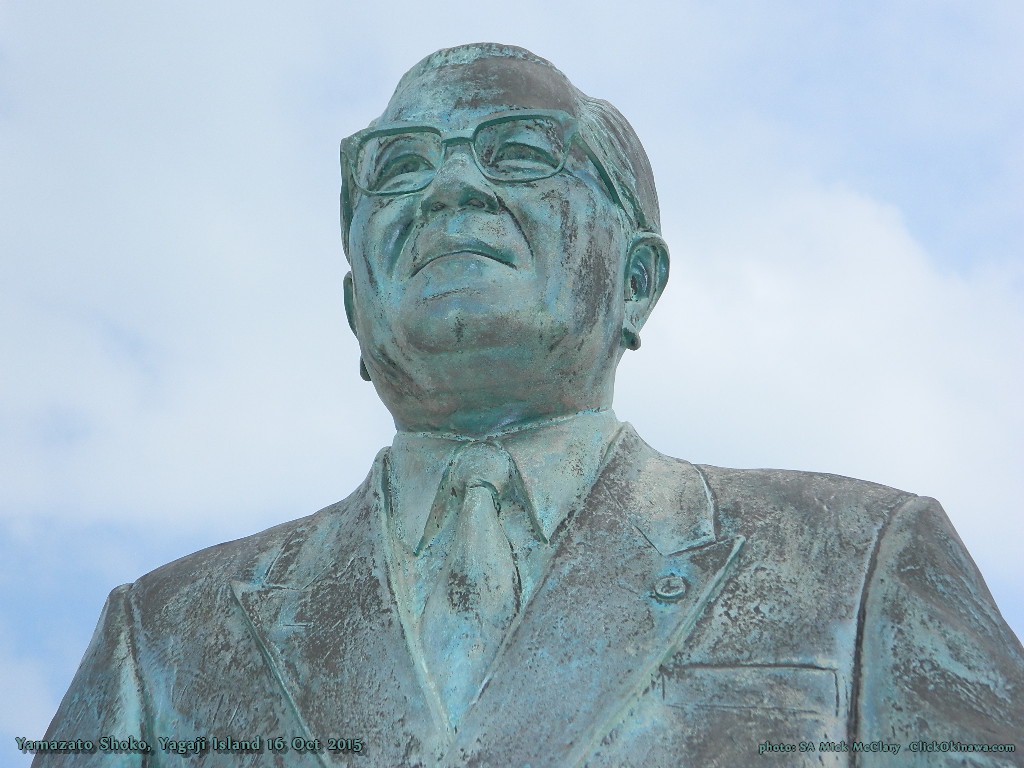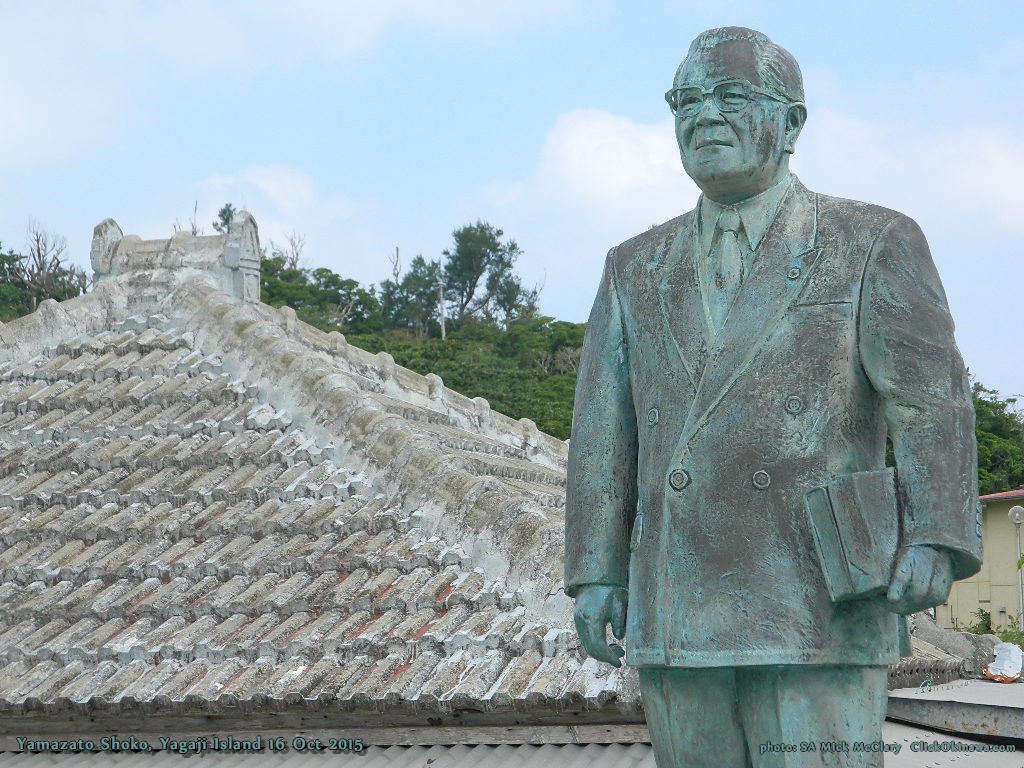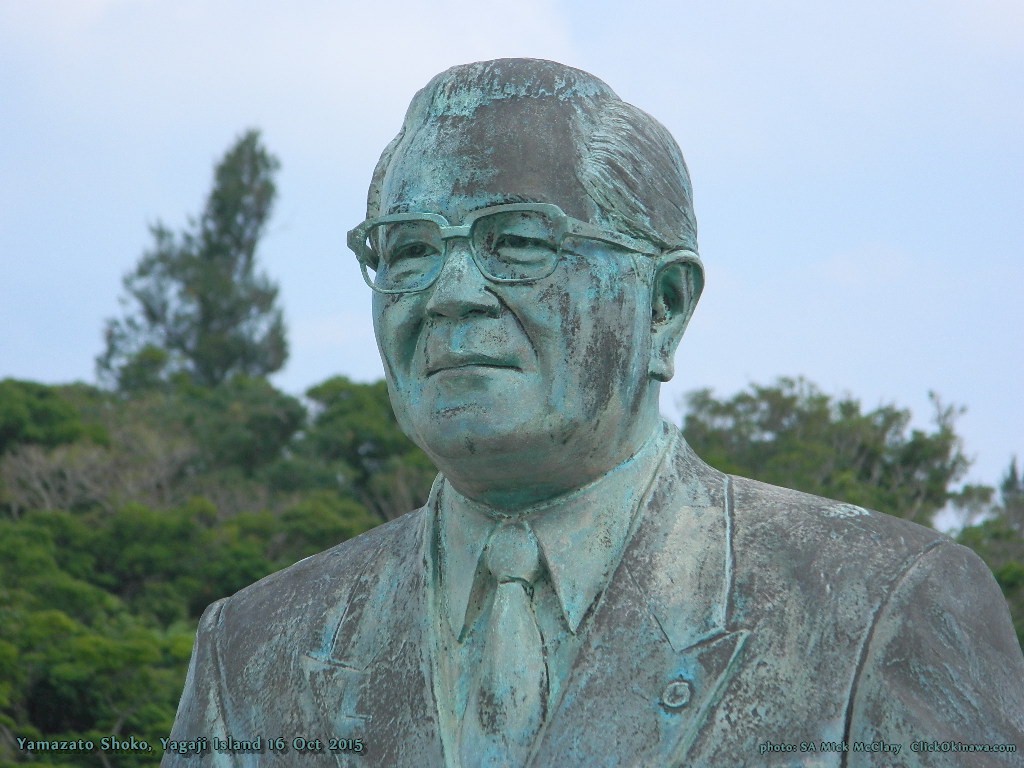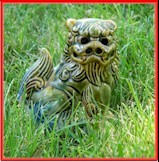    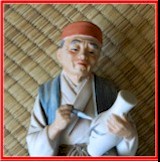              |
While driving around on Yagaji Island, October 16th, our first full day back on Okinawa, Zac and I saw this monument situated next door to a little "mama-san" store.
Being ever curious about such things, I stopped to take some photos. I went into the little store and sang out, "Sumimasen!" She replied, while holding her hand across her toothless mouth and brushing her hair back with the other hand, "Yamazato-san." She then said something else that made me wish that I had spent my fourth grade-thru-college years learning Japanese instead of French (what a waste). I didn't understand what she said but thanked her profusely and was about to make a purchase in order to convey my thanks when she abruptly ran behind the drape and didn't re-emerge. So, armed with only a few words - 'Yamazato', 'zo' and 'Yagaji' - I plugged them into Google last week and got a couple of hits regarding a professor of business studies at the University of the Ryukyus byname of Yamazato Shoko. Unsatisfied, I posted these photos on my Facebook group, 'ClickOkinawa.com' asking if anyone could help with deciphering the identity of the man depicted and the writings on the plaques and tablets. I got a reply from Bobby Yun Cheun Tai who told me, "... your presumption is correct. Professor Yamazato Shoko. The statue was erected to commemorate a professor / honorary professor of Ryukyu University, Political Science - Economics. One of the plaques is a memorial from his disciples / students." I have also received descriptive comments from George Takaho. Thanks, guys! I love the Internet and the ready, immediate access that I have to people who know so much more than I! I learn something just about every time I get online.
So, allow me to present... *drum-roll, please* Yamazato Shoko
Bobby also said, "A Japanese virtue which is difficult to translate one to one into English. .
George Takaho tells us: "Right side bold character reads--Fuushi no michi wa chuu jo no mi. Left small and bold characters--Hesei 12 (Year 2000) Nov. 14---Deshi ichi do"
George: "I tried reading he script but was unable to read all. Seems like the followers (Deshi) erected tthe monument to compliment / show respect to their Sensei's teaching or good work deeds."
Bobby: "Picking up from George, another interpretation - Fuushi no michi, cho you no mi - The way for Disciples is but steadfast dedication."
.
.
.
.
.
.
.
.
1996-2015 ClickOkinawa.com |
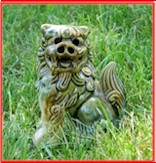  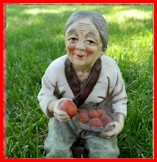  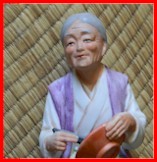              |

